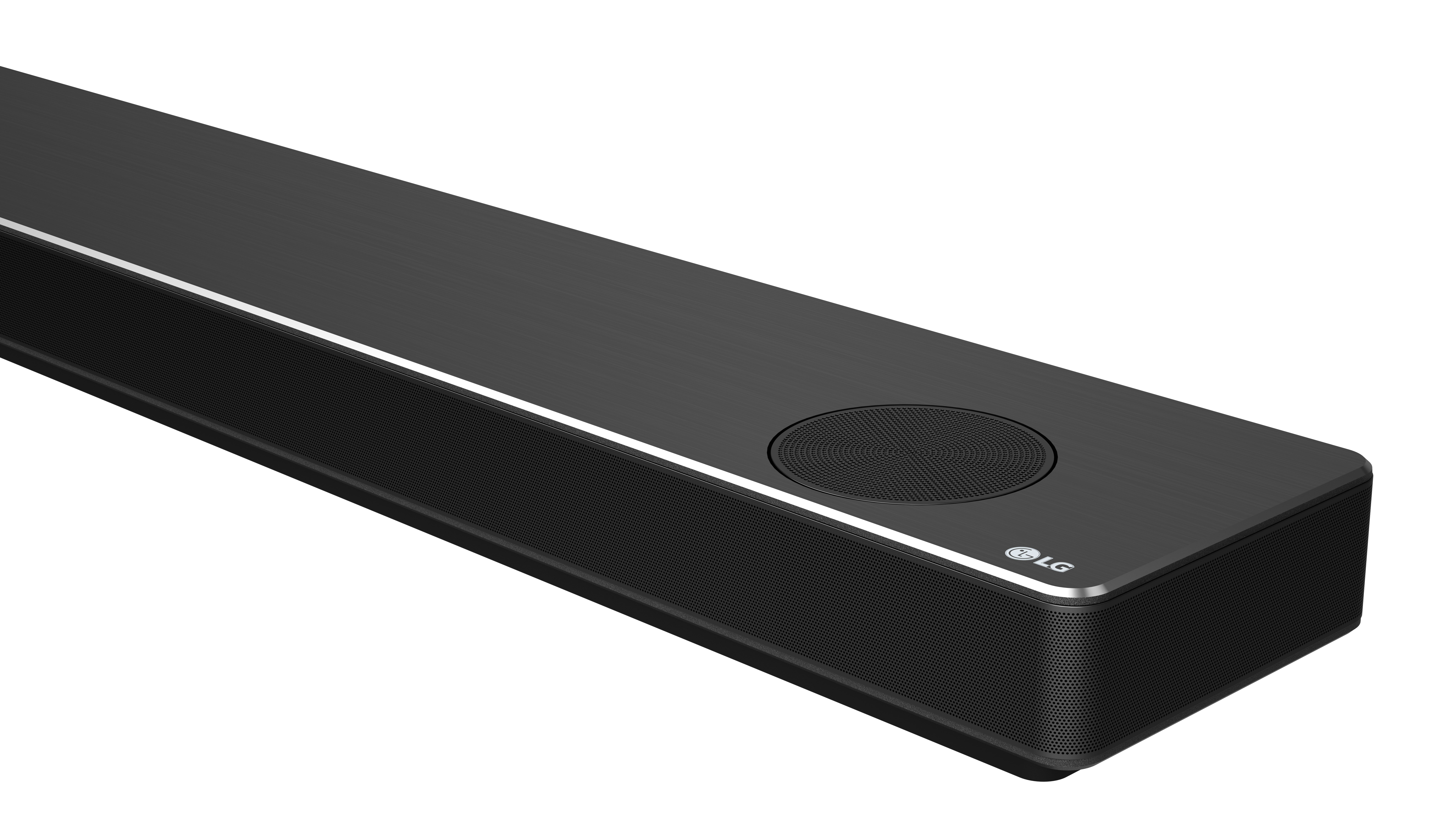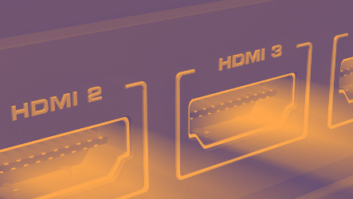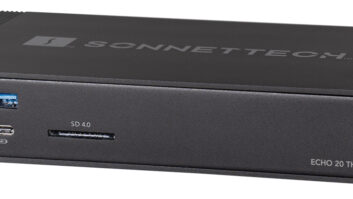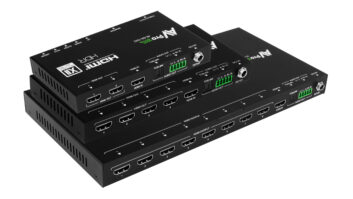In the eyes of many, HDMI is something you can’t live with and can’t live without. Or, quite frankly, since the first incarnation of HDMI was announced six and a half years ago, HDMI has been the format some installers and consumers love to hate.
Like any highly complex, software-intensive format, HDMI has had its growing pains. However, as even the most vocal “…I’ll give up component when they take it from my cold, dead hands…” proponents will have to admit, HDMI is now something you can’t do without.
As we’ve all gone down the road from Version 1.0 to 1.1 to 1.2 to 1.2a, and ultimately to Version 1.3, device and software compatibility has greatly improved. Issues with the HDCP handshake that caused blank screens and service calls for “…my cable box won’t work with that damn AVR you sold me…” have all but disappeared as well. More importantly, with the arrival of Blu-ray, HDMI really has become a must-have for bringing the high-bit-rate Dolby TrueHD and DTS-HD Master Audio formats from Blu-ray machines to AV receivers and surround sound processors.
With things working reasonably well, particularly with the additional testing called for in the 1.3a, 13.b, and 1.3c versions of the Compliance Test Standard (CTS), one might think that the folks behind HDMI would leave well enough alone. Perhaps, but as technology marches on, so must HDMI.
Thus, soon you’ll have to get used to the latest incarnation of HDMI Version 1.4, which was formally announced last week. For those who are still nervous about any change to HDMI, the first question you’ll likely ask is “How soon?” Even though the standard has been announced, the final specifications are still not set — that is scheduled to be completed no later than June 30. The next step is for the chip suppliers to take those specs and embed them into receivers, transmitters, and port processors, and then take into account the time that will be required to “tape out,” sample, and finalize the chips. That could take anywhere from a few weeks to two or three months, depending on how far along they have gone without the final specs. Add to that the time required for product manufacturers to get the sample chips, integrate them with the hardware and software sides of their products, debug and test, get the products certified and then into production, and you are looking at something that could be previews at the earliest during CEDIA, and with full production most likely in early 2010. (But be warned, things could show up faster… or take longer. After all, this is HDMI!)
However long it takes, when you break down the benefits of HDMI Version 1.4, you’ll see that as much as some might wish to see any format/specification change go away, this one is definitely going to happen. The only question is when will be the right time to begin adding HDMI V.1.4 products to your clients’ systems. Unlike the transition from V.1.2/1.2a to V.1.3, this one may be a “must have” down the line, but it won’t be that critical in the early stages.
Why consider switching systems in place to Version 1.4? Take a look at the feature upgrade, and see if it makes sense in any specific installation.
High-Speed Ethernet Channel
The first new feature is an interesting one, the addition of a high-speed Ethernet channel to the HDMI link. This 100 Mb/sec connection will allow one HDMI 1.4 device to become what amounts to a router, providing broadband data to other HDMI 1.4-equipped components that it is connected to. With everything from TV sets to AVRs to Blu-ray players and other set-top sources becoming ‘net-centric, this will make HDMI a truly “one-cable connection,” eliminating the need for additional network connections between components. Nice, and a big boon to techno-phobic DIY’ers, but not something that isn’t already taken care of by switches and connections by any capable installer. And, remember, this only works with HDMI 1.4 devices.
Two-Way Digital Audio
Next up is an interesting feature, an audio return “back-channel” that makes HDMI two-way for digital audio signals. Again, this is nothing that any installer worth their salt can’t take care of with an additional SP-DIF connection, but nice for its ability to achieve that holy grail of single-wire connectivity. Where is this of value? As consumers increasingly go “over the top” and think about dropping cable or satellite and using either “cloud content” services or a display’s built-in ATSC tuner and an antenna for broadcast television, you need to have a way to get the 5.1-channel Dolby Digital or PCM audio from the ATSC tuner in the TV to the AVR or surround processor. Again, the (typically optical) digital output of the TV can do this, but it will nice to let the single HDMI cable take care of this.
3D and 4Kx2K Resolution
Two of the feature components of HDMI V 1.4 may, to some extent, be grouped together: “3D over HDMI” and “4K x 2K resolution” are designed to deal with formats that are either not yet codified into an agreed-upon standard or available to consumers yet, but having them as a part of HDMI 1.4 means that any system with HDMI 1.4 will be ready to go once these bandwidth-intensive formats are set to go. Particularly for large screen, high-performance systems, this is one part of the new spec that will make it a must have as time moves forward.
Anyone who has looked at high-end digital still cameras, particularly the high-pixel-count digital SLRs, knows that the bandwidth required to extract the images is increasing and the accuracy of the color space is improving with cameras that support sYCC601, Adobe RGB, and Adobe YCC601. If you don’t know what this means, but your client does, that’s a sign that you need to brush up on digital photography, and be ready to provision HDMI 1.4 for those clients.
Micro HDMI Connectors
With all of these technical features come some additional connectivity options. The new HDMI version debuts a “Micro HDMI” connector that has the full complement of 19 pins, but in a size that is 50-percent smaller than the current full-size connector. It may be some time before you see this connector on the front panel of home electronics products, and until then you can bet that there will be adaptors available from the wide world of wire and cable brands. The size of the connector makes it a natural for still cameras, camcorders, and other portable devices, so your clients’ usage of those products makes availability of Micro-HDMI something you’ll want to add to your client interview lists sooner than later.
Compatibility?
With the new connector come new cables. From a forward/backwards compatibility standpoint, current “standard” and “high-speed” HDMI cables are compatible with all aspects of the new format version within their available speed ratings save for the Ethernet functionality. If that isn’t something an installation will be taking advantage of, current cables will work. If the Ethernet link is used, new-spec cables are required, and, of course, they will work with all earlier versions of the standard.
HDMI for the Car
Not mentioned here are the parts of the HDMI V.1.4 standard that are specifically aimed at bringing HDMI-based connectivity to vehicles. Yes, there are special cables for automotive use, and there will be specialized components for in-car used that are designed to deal with the environmental heat/vibration/noise demands, but all of that is outside of our residential world for the moment. Once the final specs are released, we’ll deal into the home-to-car integration aspects of HDMI.
Worth the Wait?
OK, so know that you know what it is and have a reasonable guess as to when it will be available, the question is whether or not to wait for it. Part of the answer to that comes from looking at the individual aspects of the new format as listed above. See how each of the individual pieces of the puzzle come together for any individual client and their needs. For some, it might be worth waiting, or perhaps using a current or less-expensive product as a stand-in before HDMI 1.4 products are available. For other clients, however, it might not be important right away and the upgrade from HDMI 1.3 to 1.4 is something that will happen in a given system over time with the natural attrition and replacement of components.
Remind those clients anxious for the latest and greatest that some pieces of the HDMI 1.4 puzzle don’t fit together unless everything is 1.4. Do they really want to, or need to, replace an entire system? Again, in many cases the transition will take care of itself over time.
Speaking of time, it is worth noting that the first few HDMI version upgrades came at a clip of about 12-18 months (with the exception of the quick four month gap between 1.2 and 1.2a). However, it has been three years since the announcement of HDMI 1.3, and it is only within the last year or so that HDMI 1.3 has really been mandatory, driven for the most part by Blu-ray players (and, in their day, HD-DVD). This time around there is a parallel situation. It is probable that 3D and 4K video will be the main drivers that require HDMI 1.4, and even the most optimistic pundits see widespread availability of those two formats at least 12-24 months out in the distance, if not longer. For that reason, it is a fair bet that HDMI 1.4 will, with minor refreshes, last at least as long as HDMI 1.3 did, if not another year or two longer. You’ll need it, but in most cases not right away.
Bottom line
HDMI Version 1.4 absolutely brings very important new features to digital audio/video system interconnection, but at least for now it is something to watch and integrate going forward rather than something that will make it essential to implement right away. Remembering the need for a full HDMI 1.4 system for many of the benefits to be useful, take a gradual approach. Where possible, an HDMI 1.4-capable display will be the first logical step, as displays tend to be the most expensive part of a system and have the longest life span. That’s where the 3D and 4K will come into play. Source components and repeater products are likely replaced more often, so they’ll get with the program further down the line. The good news is that displays will likely see more HDMI 1.4 sooner than other product categories.
Going forward, HDMI 1.4 will be something you won’t have to think about; you will just provide it. From admittedly awkward beginnings, HDMI technology has become an essential part of the glue that holds complex audio-video systems together. With V.1.4, perhaps the past ills that some saw in HDMI will fall away and the format will finally get the respect it deserves. Going forward, you will easily be able to live with it, and you definitely won’t be able to live without it.






